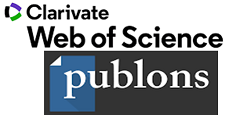PENERAPAN SIKLUS PDCA (PLAN-DO-CHECK-ACT) UNTUK MENGURANGI PRODUK CACAT DI PERUSAHAAN SEPATU XYZ
Abstract
The shoe industry faces many challenges in running its business, one of which is a decline in production. This is due to the continued high number of defective products produced by the existing process. This study focuses on the printing/screening division which has a high cost impact on production. This study aims to analyze the factors that cause product defects and provide suggestions for improvement efforts. The method used in this improvement is PDCA (Plan-Do-Check-Act). The PDCA approach is one method used to help improve production quality sustainably. The results of this study found that several factors causing defects were unstable/damaged heater lamp temperatures, no temperature checking standards, the use of chemicals that do not meet standards, dirty table mats and leaving residue on the glue. Based on several improvements that have been implemented, there has been a significant decrease in defective/defective product output from before. In the fourth week of April, the number of defective products was 379, a decrease compared to the previous week in the same month, which was 871 defective products.
Downloads
References
[2] W. Warinah and D. Nusraningrum, “Application of Six Sigma (Dmaic) Method to Reduce Defect Amount in Assembly Process A Case Study PT. XYZ,” International Humanities and Applied Science Journal, vol. 2, no. 3, p. 59, 2019, doi: 10.22441/ihasj.2019.v2i3.06.
[3] J. Gupta, R. Kumar Pandey, and N. K. Sharma, “Footwear Quality Management: Strategies, Challenges, and Innovations,” International Journal of Advanced Research in Innovative Ideas and Innovations (IJARIIE), vol. 10, no. 2, pp. 23–98, 2024, [Online]. Available: www.teoline.com
[4] S. Kumar, A. Dhingra, and B. Singh, “Lean-Kaizen implementation: A roadmap for identifying continuous improvement opportunities in Indian small and medium sized enterprise,” Journal of Engineering, Design and Technology, vol. 16, no. 1, pp. 143–160, 2018, doi: 10.1108/JEDT-08-2017-0083.
[5] Minh Ly Duc and Que Nguyen Kieu Viet, “Improvement Productivity and Quality by Using Lean Six Sigma: A Case Study in Mechanical Manufacturing,” International Research Journal on Advanced Science Hub, vol. 4, no. 11, pp. 251–266, 2022, doi: 10.47392/irjash.2022.066.
[6] N. Chugani, V. Kumar, J. A. Garza-Reyes, L. Rocha-Lona, and A. Upadhyay, “Investigating the green impact of Lean, Six Sigma and Lean Six Sigma: A systematic literature review,” International Journal of Lean Six Sigma, vol. 8, no. 1, pp. 7–32, 2017, doi: 10.1108/IJLSS-11-2015-0043.
[7] G. Jimenez et al., “Improvement of productivity and quality in the value chain through lean manufacturing - A case study,” Procedia Manuf, vol. 41, pp. 882–889, 2019, doi: 10.1016/j.promfg.2019.10.011.
[8] M. N. Dudin, O. O. Smirnova, N. V. Vysotskaya, E. E. Frolova, and N. G. Vilkova, “The deming cycle (PDCA) concept as a tool for the transition to the innovative path of the continuous quality improvement in production processes of the agro-industrial sector,” European Research Studies Journal, vol. 20, no. 2, pp. 283–293, 2017.
[9] A. Demirel, “Improvement of hand hygiene compliance in a private hospital using the Plan-Do-Check-Act (PDCA) method,” Pak J Med Sci, vol. 35, no. 3, pp. 721–725, 2019, doi: 10.12669/pjms.35.3.6.
[10] A. Chakraborty, “Importance of PDCA cycle for SMEs,” International Journal of Mechanical Engineering, vol. 3, no. 5, pp. 30–34, 2016, doi: 10.14445/23488360/ijme-v3i5p105.
[11] K. Nadiyah and G. S. Dewi, “Quality Control Analysis Using Flowchart, Check Sheet, P-Chart, Pareto Diagram and Fishbone Diagram,” Opsi, vol. 15, no. 2, p. 183, 2022, doi: 10.31315/opsi.v15i2.7445.
[12] Gaspersz, Vincent. (2002). Pedoman Implementasi Program Six Sigma. Bogor:Gramedia.
[13] H. Kurnia, C. Jaqin, and H. H. Purba, “Quality improvement with PDCA approach and design of experiment method in single socks industry in Indonesia,” AIP Conf Proc, vol. 2470, no. April, 2022, doi: 10.1063/5.0080179.
[14] A. A. Júnior and E. E. Broday, “Adopting PDCA to loss reduction: A case study in a food industry in Southern Brazil,” International Journal for Quality Research, vol. 13, no. 2, pp. 335–347, 2019, doi: 10.24874/IJQR13.02-06.
[15] A. Dimitrescu, C. Babis, A. M. Alecusan, O. Chivu, and A. M. Faier, “Analysis of Quality Problems in Production System using the PDCA Instrument,” Fiability & Durability/Fiabilitate si Durabilitate, vol. 1, no. 1, pp. 286–292, 2018.
[16] V. Nguyen, C. K. B. Chau, and T. Tran, “PDCA from Theory to Effective Applications: A Case Study of Design for Reducing Human Error in Assembly Process,” Advances in Operations Research, vol. 2023, 2023, doi: 10.1155/2023/8007474.
[17] A. Realyvásquez-Vargas, K. C. Arredondo-Soto, T. Carrillo-Gutiérrez, and G. Ravelo, “Applying the Plan-Do-Check-Act (PDCA) cycle to reduce the defects in the manufacturing industry. A case study,” Applied Sciences (Switzerland), vol. 8, no. 11, 2018, doi: 10.3390/app8112181.
[18] A. Chojnacka-Komorowska and S. Kochaniec, “Improving the quality control process using the PDCA cycle,” Prace Naukowe Uniwersytetu Ekonomicznego we Wrocławiu, vol. 63, no. 4, pp. 69–80, 2019, doi: 10.15611/pn.2019.4.06.
[19] Alifiansyah Rizaldy Satya Putra, Moh. Jufriyanto, and Efta Dhartikasari Priyana, “Analisis Kualitas Kemasan Minyak Goreng Dengan Metode Seven Tools Guna Mengurangi Kegiatan Repack Di Pt.Wina Gresik,” Jurnal Radial, vol. 11, no. 1, pp. 15–28, 2023.
[20] I. A. Memon, M. K. Abbasi, Q. B. Jamali, N. A. Jamali, A. S. Jamali, and Z. H. Jamali, “Defect Reduction with the Use of Seven Quality Control Tools for Productivity Improvement at an Automobile Company,” Engineering, Technology and Applied Science Research, vol. 9, no. 2, pp. 4044–4047, 2019, doi: 10.48084/etasr.2634.
[21] E. Haryanto, “Analisis Pengendalian Kualitas Produk Bos Rotor Pada Proses Mesin Cnc Lathe Dengan Metode Seven Tools,” Jurnal Teknik, vol. 8, no. 1, 2019, doi: 10.31000/jt.v8i1.1595.

This work is licensed under a Creative Commons Attribution 4.0 International License.







_uk501.png)

.2022-2026_uk200_pxl_.jpg)















.png)
3.png)


